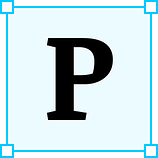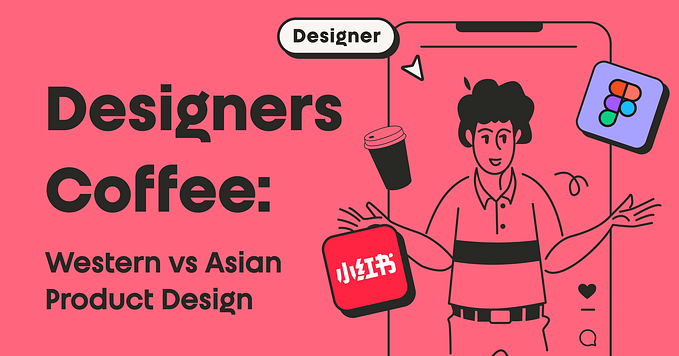WORKSHOP
Workshop & guide: define the tone of voice of your product
A collaborative way to improve how your product communicates with its users

Awaken your inner UX writer
 Product teams come in all shapes and forms, but they often don’t have a dedicated writer. Writing the text for products often happens on the fly and the result does not always support users best. This workshop is for designers, product managers, and anyone who wants to improve the way their product communicates with its users. You can run it anytime, it does assume that you already talked to your users though. You need to have a solid understanding of their goals, problems, and their context.
Product teams come in all shapes and forms, but they often don’t have a dedicated writer. Writing the text for products often happens on the fly and the result does not always support users best. This workshop is for designers, product managers, and anyone who wants to improve the way their product communicates with its users. You can run it anytime, it does assume that you already talked to your users though. You need to have a solid understanding of their goals, problems, and their context.

Why run it
Outcome: You will have a product that people understand and ultimately want to use. Your product will sound human and will enable your users to get to their goal smoothly. You will know when this is the case because you will test it with real people and refine it.
The workshop emerged of exercises I successfully ran with different teams and clients over the past years. To innovate fast and keep the product cycle lean, teams at VMware Pivotal Labs are small. They only consist of 1 product designer, 1 product manager, and 1–2 engineers. This means that as a designer, I get to wear many hats. I facilitate teams to run user research, find users’ pain points, create solution hypotheses, and test them with users. We don’t have a dedicated user researcher, content strategist let alone a UX writer. Being responsible for the success of the product means we have to embody these roles though.
Improve your users’ experience and save your team’s time
This workshop has saved teams hours when writing because they knew how the product should sound in advance. More importantly: it has significantly improved the experience for users. I like to think of the workshop as a toolbox rather than a strict guide: take what works for you. Ready? Let’s unleash the inner UX writers of your team!
Already have a tone of voice guide?
That’s great! This workshop is still valuable to align your team and set them into the right state of mind for copywriting. You’ll receive feedback on how the guide works for your users. Share it at the beginning of the workshop when you share user evidence. ( 💬 My favourite tone of voice guides are by Monzo, gov.uk, and google material).
Have a writer on your team?
If you are lucky enough to have a dedicated writer, that’s even better. No workshop can replace what a professional brings to your team. You can still run the workshop. Just as design, writing should not be done hidden away from the team anyway.
Ready? Start preparing!
Block about 2 hours of your team’s time. It’s key to run this workshop with the whole product team. Creating a product’s way of communication needs diverse views and healthy disagreements along the way. Plus: your team will be aligned on it. As the facilitator, it’s on you to use your team’s time wisely though, and prepare everything for a smooth workshop. (⏱ Need to refresh your remote facilitation skills? Check out this guide).
Set your team up for collaboration
- In-person: A large room with a screen to connect with your laptop, sticky notes, sharpies, and two large whiteboards. Bring your phone to take photos and a timer to keep the time.
- Remote: A video conferencing tool and a digital whiteboard (my personal favourites: miro and Figma). Tidy your screen, you’ll be sharing it and ask everyone to switch on their camera, human touch matters.

Free Template
Save time and use this handy template: all exercises including homework. It’s free to download for everyone:

Step 1: Understand your users
Homework: Ask your team to listen to real users
Plan 30 minutes for this activity in advance

Ask your team to do a little upfront research: where do real people already talk about a similar topic? What words do they use? Good places to look for user conversations are online forums, social media sites, product reviews, or the comments section in the app store. Remember: this is not about other companies talking, but real user conversations. Everyone should bring at least 5 words or sentences to the workshop.
Share user evidence
Plan 30 minutes for this activity
Set your team in the right mindset: your users’. It is important that you have already talked to real users before you run this workshop. It should not rely on assumptions but user evidence — as should your product!
At VMware Pivotal Labs, we run a 4–6-week discovery and framing phase 🗺 at the beginning of every product development. We make sure we get to know our users and we are solving the right problem for them. Sounds interesting? The free Design Guide at the bottom of the page explains it all.
Prepare what you’ve learned about your users and bring this info to the workshop. Think about using personas, user journeys, problem statements, etc. Choose what will spark your team’s empathy the most. You should be able to answer:
- Who are your users?
- What problem are you solving for them?
- What is their context?
- What is their journey?
- How do they talk about this topic?

Step 2: Define the personality of your product
Plan 60 minutes for this activity
This is the ‘define’ part of the workshop. Make sure to schedule a short break for your team, they will need a clear head. Run the following exercises:
⇢ Exercise: Personality traits
⇢ Exercise: How is the product NOT?
⇢ Exercise: Write a dialogue & play it
⇢ Exercise: Experiment with the tone

Exercise: Personality traits
Write down key personality traits your product had if it was a real person. They should match your users’ expectations and align with the existing tone of voice guidelines. Help your team by giving example personality traits.
5 min: silent writing
10 min: shareout with the team, ask clarifying questions, or disagree
5 min: cluster similar ones, dot-vote on the most important ones
Exercise: How is the product NOT?
Write down adjectives the product will NOT embody. This will help you eliminate doubt when writing. They can turn out to be the opposite of the adjectives you set as personality traits, but they don’t have to.
5 min: silent writing
10 min: shareout with the team, ask clarifying questions, or disagree
5 min: cluster similar ones, dot-vote on the most important ones

Exercise: Write a dialogue & play it
If your product was a real person: how would it help your users through the task? Split into groups of 2. Pick a crucial part of your product and write it as a dialogue between your user and a fellow human, tasked to solve the user’s problem. Pro tip: pretend your user does not understand any technical term. Let them ask for every word they don’t understand. This will help your team humanize tech language and jargon.
Get together and play the dialogues from each group. This will help you to see whether the conversation flows naturally and to have a bit of fun.
10 min: write the dialogues in groups of 2
20 min: play the dialogues from each group in front of the team
5 min: capture the parts of the dialogues that felt the most human and why

Exercise: Experiment with the tone
Individually, pick key parts of your product and write these in different styles. What are parts where you deliver a positive message, or a negative message? 🖋💡 Make sure your team knows these 16 rules of effective UX writing before they run this exercise. Dot-vote on the parts that you agree to be most valuable to test with real users. If you are unsure which route to go: test both.
10 min: write the experiment, individually
15 min: play back all copy experiments
5 min: dot-vote on the parts you think your users will resonate with

Step 3: Ask for feedback
After defining what you think your product should sound like it’s time to ask real users. This step is crucial before you proceed with writing/rewriting your product’s whole text. Otherwise, you might stick with an approach that does not speak to your users after all.
This step does not necessarily have to happen in the workshop itself. If you have the opportunity to schedule one or two user interviews directly after the workshop I would encourage you to do so. It’s a unique experience for your team to observe users react to the product.
How do you go about evaluating the tone of voice? I find Beant Kaur Dhillon’s methods to evaluate the text or content of your UI very helpful. My favourite activity to get feedback on the tone of voice is:

The highlight method
When you run 1:1 interviews, hand participants a printed version of your screens at the end of the session. Ask them to underline in light green what makes them feel confident about the product. Then ask them to underline in red what makes them feel less confident or confused. For remote interviews, miro & co. offer great digital ways to highlight. Make sure you ask why participants feel this way. Combining these parts from each participant will help you understand where to improve — and why.
As your product emerges iteratively, your copy should, too. I recommend making the text of your product part of your regular research cycles.

Task-based usability test for comprehension
If you need to understand whether the way you describe things enable your user to reach a certain goal, run a task-based usability test. As Sarah Richards put’s it in her talk on content strategy:
Users shouldn’t read anything. They should understand.
This method is the ultimate way to test if they understood. It is not only run to test the copy but also the visual interface. In a nutshell: you give the participant a task and observe how they go about it. Encourage participants to talk out loud. Ask them ‘why’-questions along the way, if they don’t naturally share what they think.
The great thing is: after running this workshop with your team, you’ve not only had valuable discussions and agreed on the tone of voice. The documentation is done at the same time. Capture the boards as PDFs or take photos of the exercises. They make excellent lean documentation of your tone of voice that already contains examples. (No-one wants to read 100 pages anyway.)

What has helped your team to find the tone of voice of your product? What would you do differently? This workshop template is version 1.0 and I’d love the next version to incorporate your feedback. Find me on LinkedIn.






